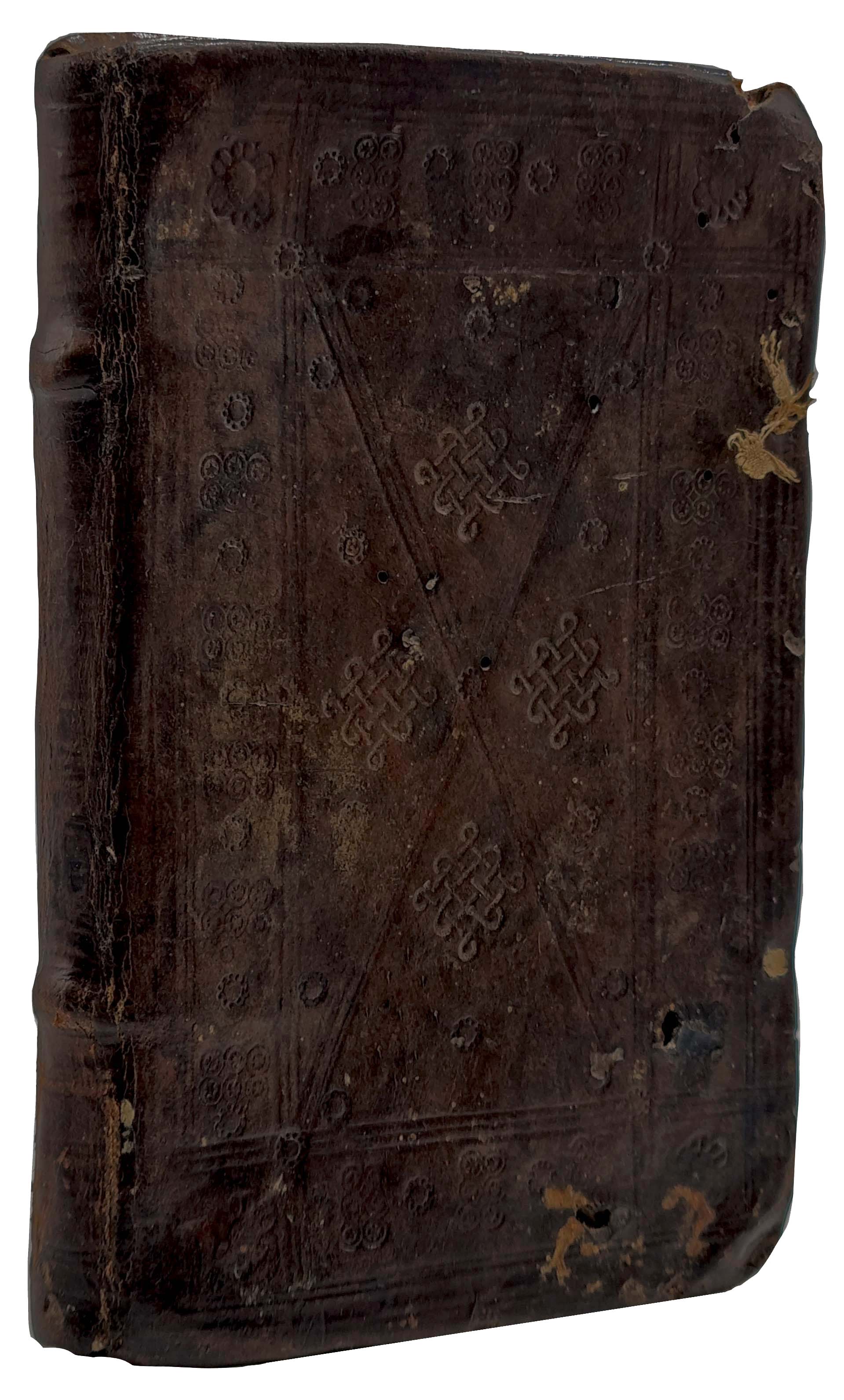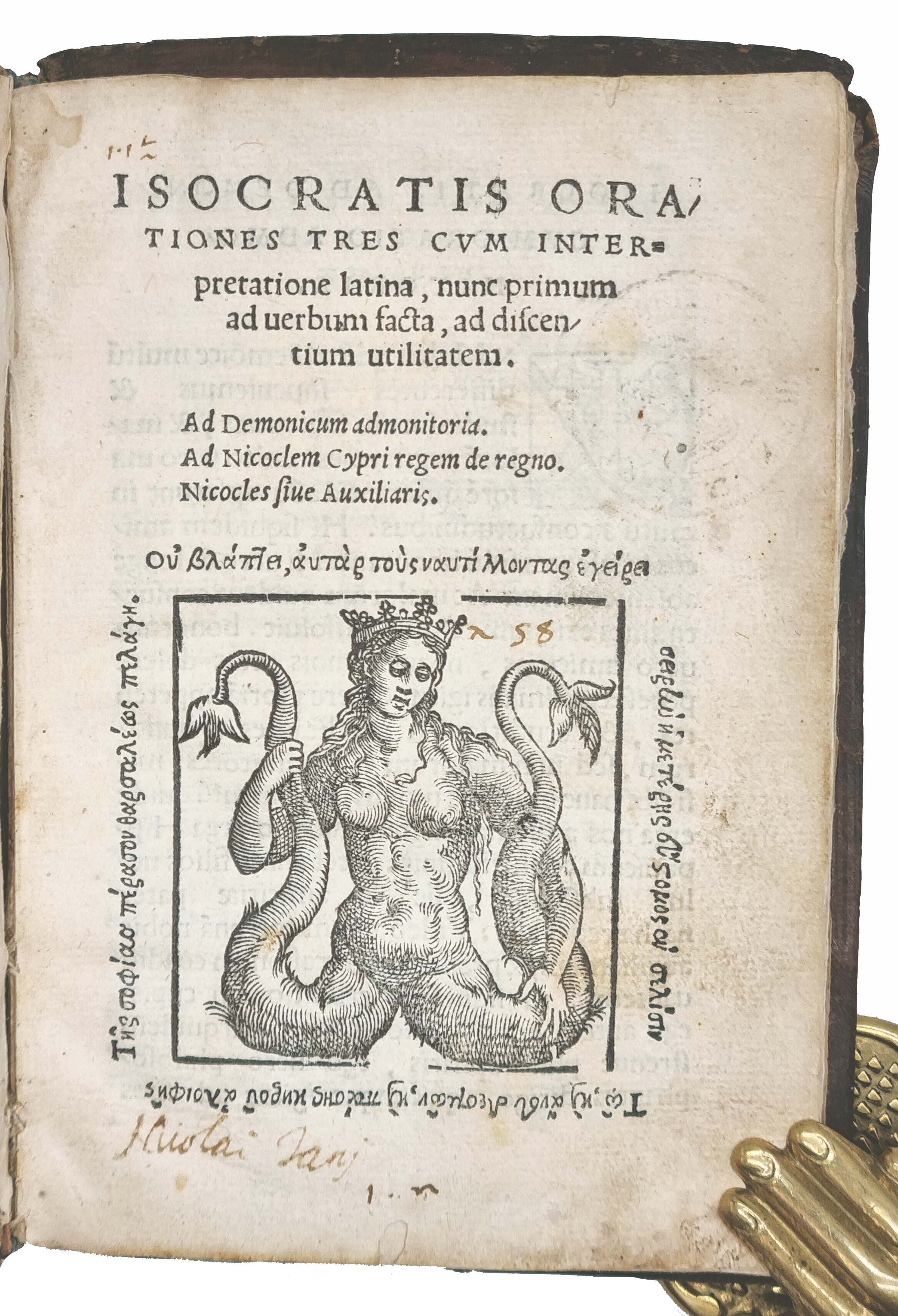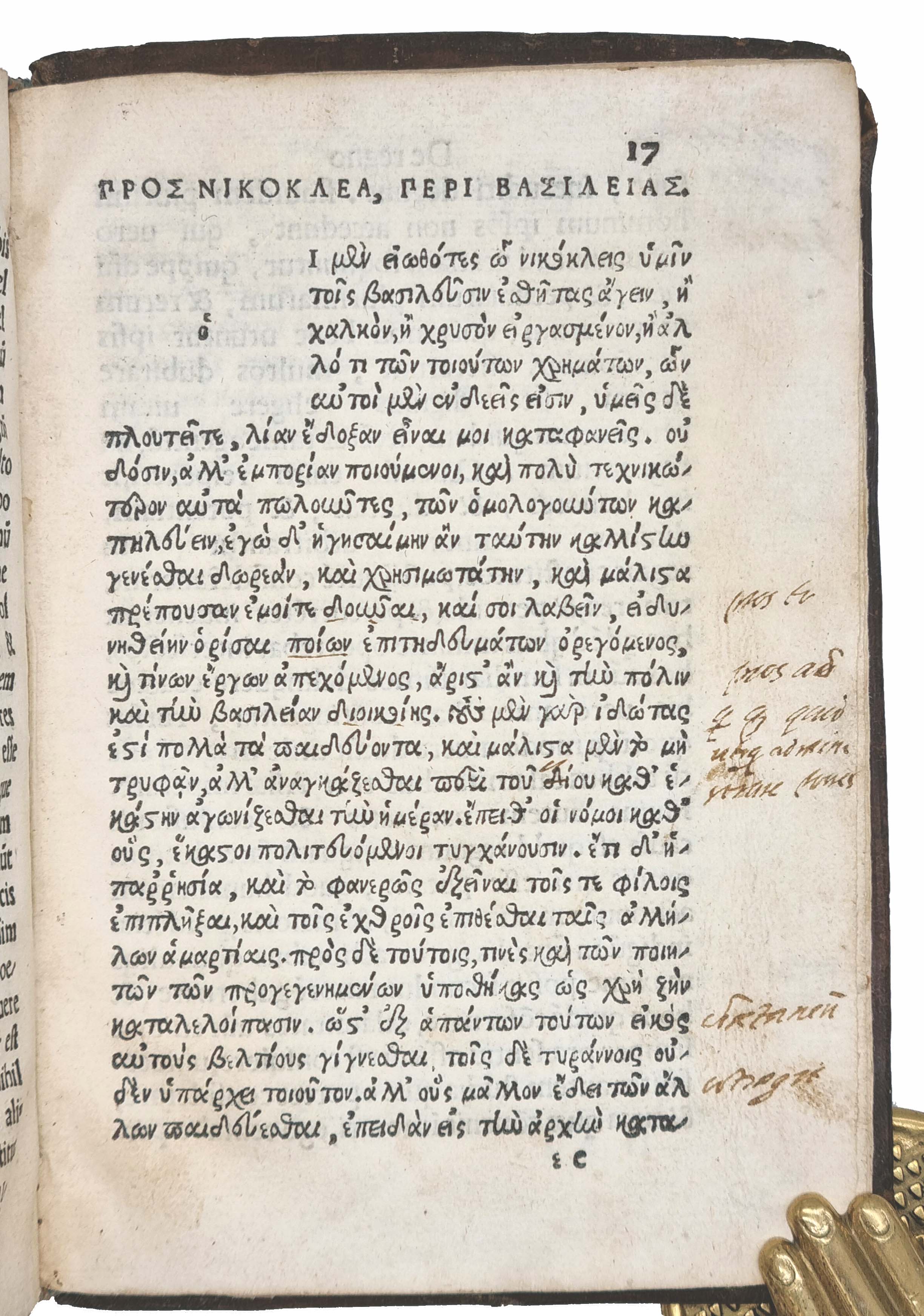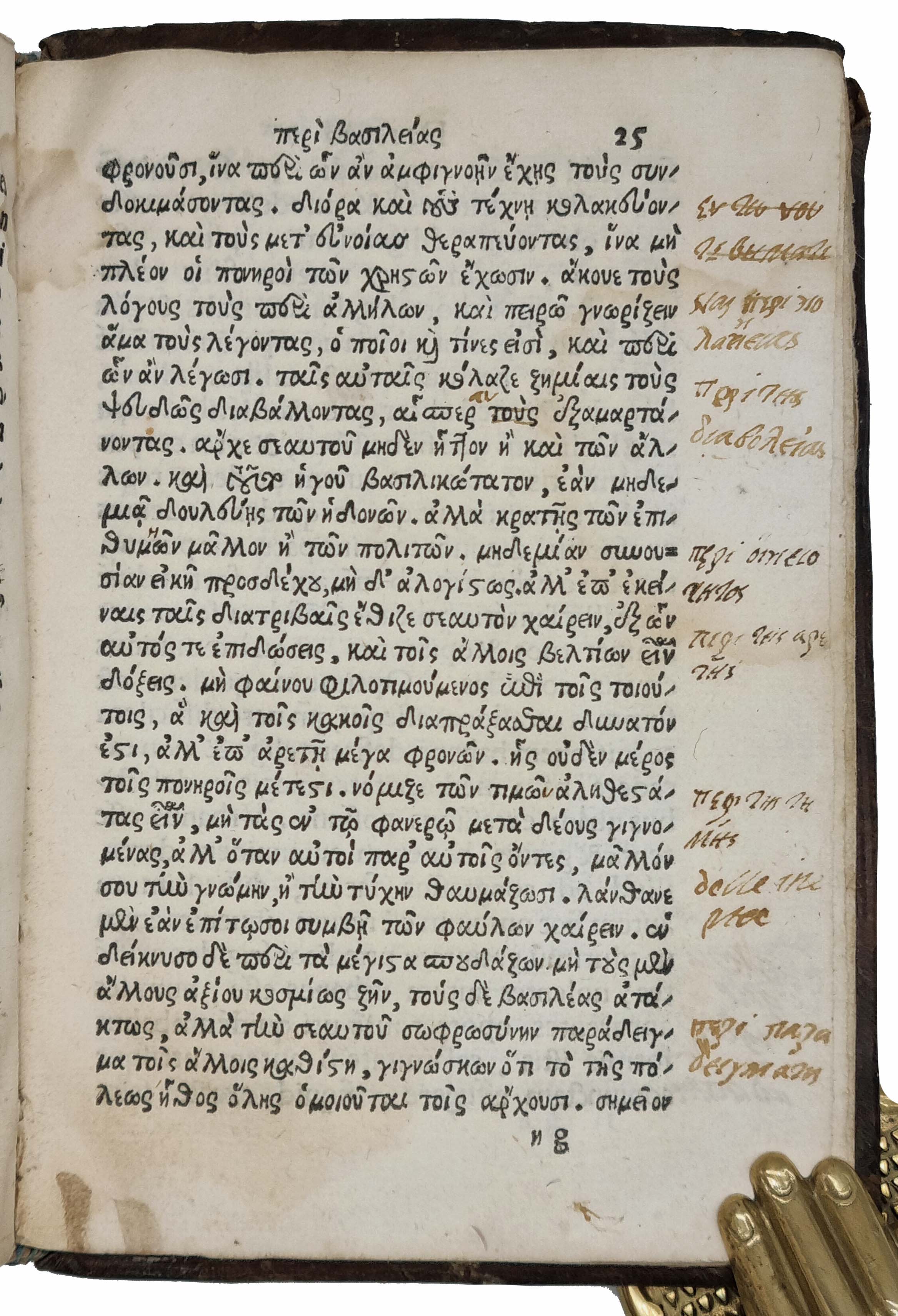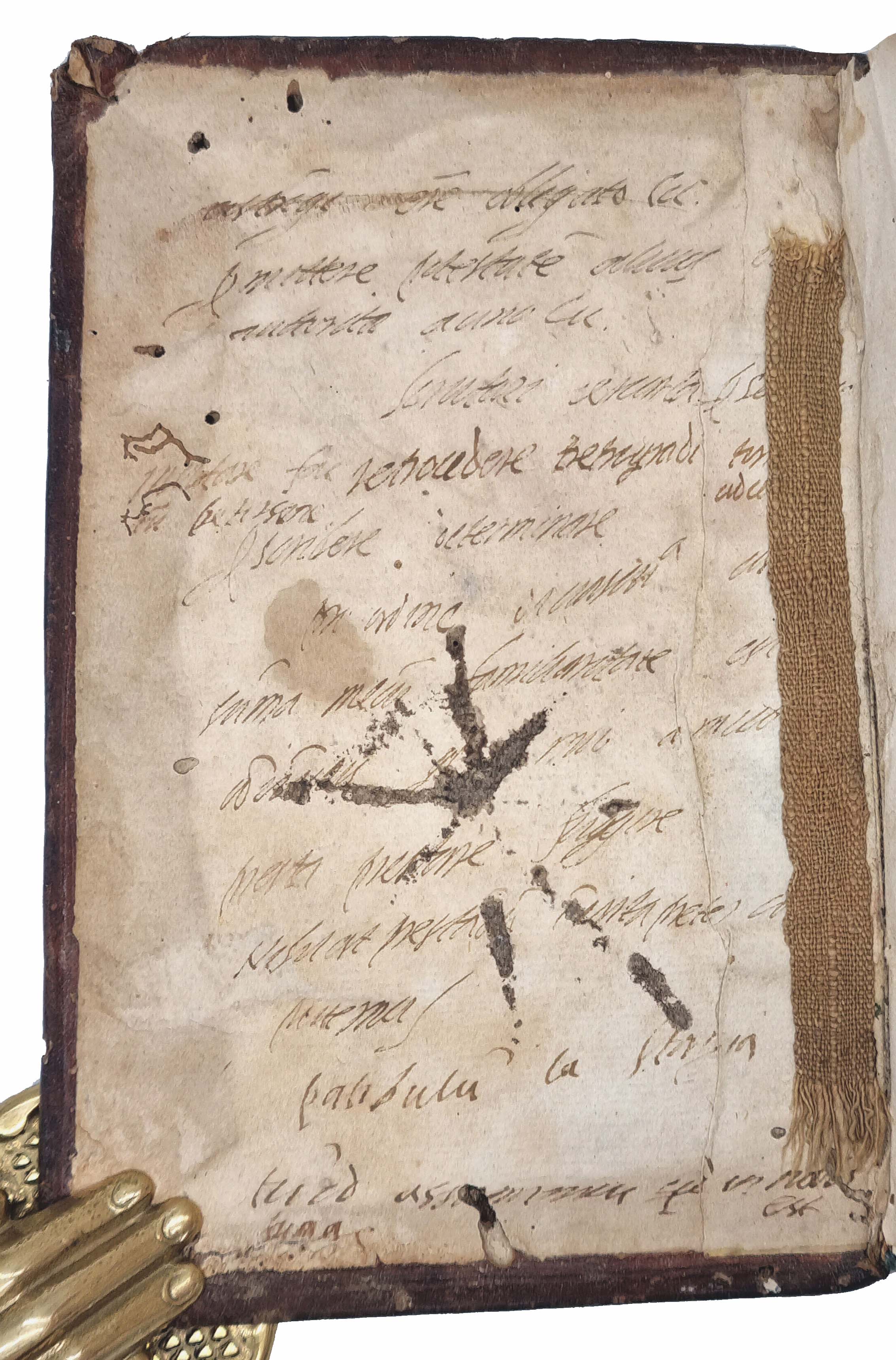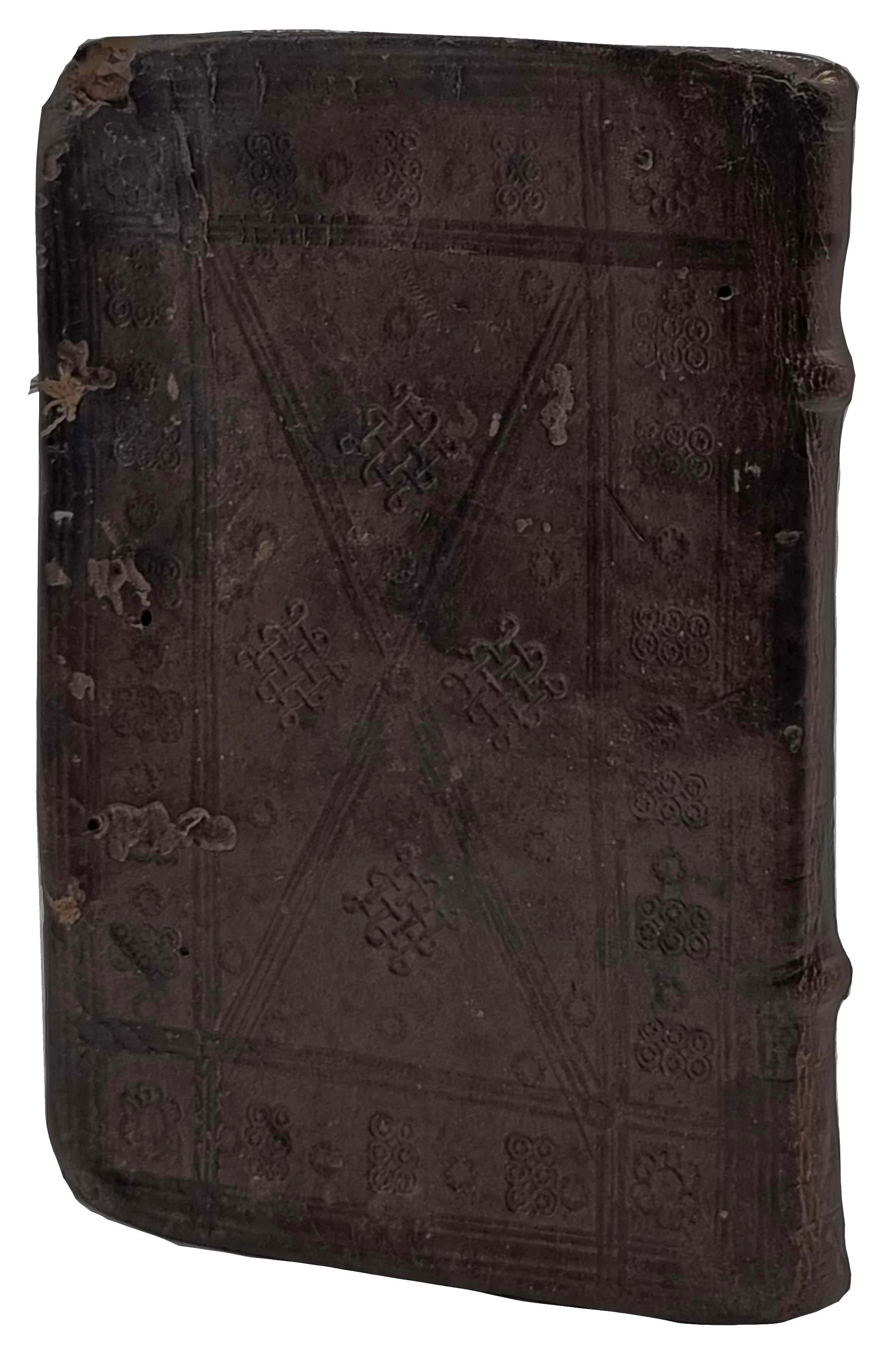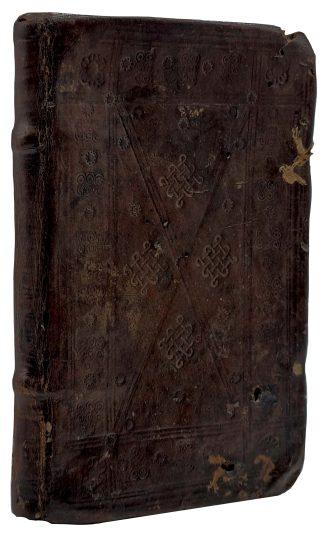ISOCRATES
UNRESTORED CONTEMPORARY BINDING
Orationes tres.
Venice, haeredes P. Ravani & Sociis, 1555£2,950.00
8vo. ff. (i) 51. Roman and Greek letter on opposing pages. Printer’s woodcut device to t-p and verso of penultimate leaf. Slight age yellowing, outer margins generally thumbed, a few faint water stains, small marginal loss to fol. 24. A well-read but attractive copy in unrestored contemporary Florentine calf, a few small wormholes, traces of ties, one loose, double endbands. Small holes to final leaf, printer name erased. Triple-ruled panel design, outer border with blind-tooled fleurons to corners, rosettes and small round tools, central panel divided diagonally into compartments, each with blind-tooled rosettes and mudejar knotwork, double rule to inner edges. Spine in three compartments decorated with horizontal rules, raised bands. Extensive early annotation, bookplate of Carlo Chiassa to fep, faded circular stamp to t-p, contemporary autograph ‘Nicolai Zanj’ and small inscriptions to t-p. In folding box.
The remarkably unrestored binding was probably made in Florence, where small blind- tooled round tools were often used alongside mudejar decoration (e.g., de Marinis I, 1006). Through its allusive Greek-style appearance, with double endbands and knotwork, it sought, like luxury ‘alla greca’ bindings in the libraries of wealthy humanists, to create a material connection with the greatness of classical antiquity.
Well-read and apparently unrecorded second edition of the first Greek-Latin text of Isocrates’s ‘Orationes tres’. One of the greatest Greek rhetoricians, Isocrates (436-338BC) worked as a writer of judicial speeches and established a successful, prestigious and
expensive school of rhetoric in Athens. He saw expression and rhythm as fundamental stylistic principles, rhetoricians as professionals with wide-ranging knowledge, and rhetoric as a discipline concerned not solely with theoretical speculation and political debates but also practical questions, including judicial and civil matters. The stylistic quality and thematic breadth of his orations—only 21 of which were available in the mid-C16—made them ideal texts for classical studies. First printed in 1549, this collected edition featured three orations. The first, ‘To Demonicus’, advises youth on how to cultivate the best and most virtuous aspirations and bear a fair yet disenchanted demeanour towards the world. The second, ‘To Nicocles King of Cyprus’, is a defence of monarchy as a form of government which exalts the best and expects rulers to treat the state as something which concerns them personally and not, like democracy, as something which concerns others. The third, ‘To Nicocles’, is a ‘mirror for princes’ advising the king on how to rule wisely, creating, for instance, laws that are ‘just, expedient and consistent’. The meticulous annotator, Nicola
Zani, was a student of Latin and Greek. He glossed the texts highlighting important passages and providing Latin translations to difficult Greek words. He also noted the meaning of two unusual words: ‘bubo’, the barn owl, and ‘inguinis’, where ‘pudenda’ are located—probably a schoolboy.
In stock


